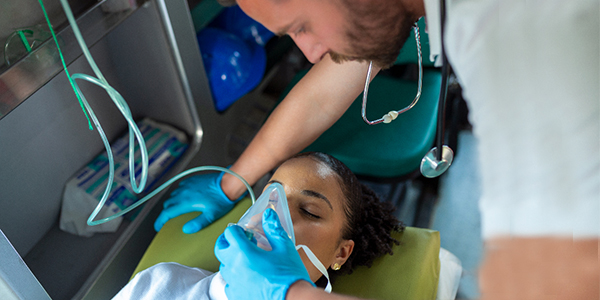DECEMBER 2024 / VOL – 001
Child Sedation in the ER: Addressing Preprocedural Anxiety and Vomiting
A recent study on preprocedural anxiety and vomiting in children has highlighted several key insights and implications for clinical practice.
It says – ”Children presenting to the emergency department (ED) often require procedural sedation and analgesia (PSA) prior to procedures. Although ketamine is used widely for PSA safely, there is a risk of adverse effects. Among them, vomiting is significant as it occurs in about 10% of patients and can potentially endanger the airway. Because there is evidence that postoperative complications might be due to anxiety prior to the operation, this study aims to investigate the association between pre-procedural anxiety and vomiting in the ED”.
The study found that while children with higher anxiety levels had higher rates of vomiting during procedural sedation and analgesia (PSA), the relationship was not statistically significant. The odds ratio (OR) of vomiting for anxious children was 1.03 (CI 95%: 1.0–1.05). It indicates only a slight and borderline association. This contrasts with previous studies in adults where a stronger link between anxiety and postoperative vomiting was noted; it was possibly due to differences in population, anxiety measurement tools and procedural settings. Vomiting was more common in emergency department (ED) settings due to higher anxiety induced by the hospital environment and procedural urgency.

Children are particularly susceptible to anxiety before procedures due to their limited understanding and dependence on caregivers. Major risk factors for preoperative anxiety in children include younger age, parental anxiety, previous negative hospital experiences, lower sociability and the procedural setting. Preoperative anxiety can trigger stress responses in children, leading to increased levels of circulating stress hormones (like glucocorticoids) which may negatively affect recovery and increase postoperative pain as well as infection risks.
We got valuable insights from this study that will pave the way for further research. More research is required to confirm this link and to determine the underlying mechanisms. However healthcare providers can still implement strategies to reduce pre procedural anxiety and vomiting in children.
Effective management of procedural anxiety is essential not only to improve the child’s immediate experience but also to prevent negative long term psychological impacts. Behavioral preparation programs that teach children age appropriate procedural expectations, sensory information and coping techniques (like breathing exercises or distraction) have been shown to reduce anxiety, lower analgesic use and facilitate earlier discharge.
Parental anxiety is also a significant influence on child anxiety and depression. Children often mirror the emotional states of their parents so parental preparation and training in supportive communication and coping strategies are recommended as part of a family centered approach.
Age appropriate explanations. Clearly explain the procedure to the child in a way they can understand, addressing their concerns and fears.
Distraction techniques. Engage the child in activities like playing games, watching videos or listening to music to divert their attention from the procedure.
Comfort measures. Provide comfort measures like holding the child’s hand, cuddling with a stuffed animal or using blankets to create a sense of security.
Medication. In some cases, administering medications like anti-anxiety or anti-nausea medications may help reduce anxiety and the risk of vomiting.
These findings emphasize the importance of early identification and intervention for preprocedural anxiety. Incorporating behavioral preparation, caregiver training and anxiety reducing interventions in pediatric care can help reduce the psychological and physical distress experienced by children during medical procedures.
If you have concerns about your child’s anxiety or vomiting before a procedure it is best to consult with your healthcare provider and discuss appropriate interventions.
Reference:
https://pubmed.ncbi.nlm.nih.gov/39385063/
Mirfazaelian, H., Ebrahimi, A., Hajizadeh, M., & Mohammadi, M. (2024). Association between pre-procedural anxiety and vomiting in children who undergo procedural sedation and analgesia in the emergency department. BMC Pediatrics, 24(1), 1-7. https://bmcemergmed.biomedcentral.com/articles/10.1186/s12873-024-01097-5
Mdpi – https://www.mdpi.com/1660-4601/19/16/9828
Pain Management Today – https://painmanagement.medicinetoday.com.au/pmt/2023/july/regular-series/managing-procedural-anxiety-children-reframe-pain
Parental anxiety – https://pmc.ncbi.nlm.nih.gov/articles/PMC3362924/
Anxiety and Depression in Children – https://www.cdc.gov/children-mental-health/about/about-anxiety-and-depression-in-children.html